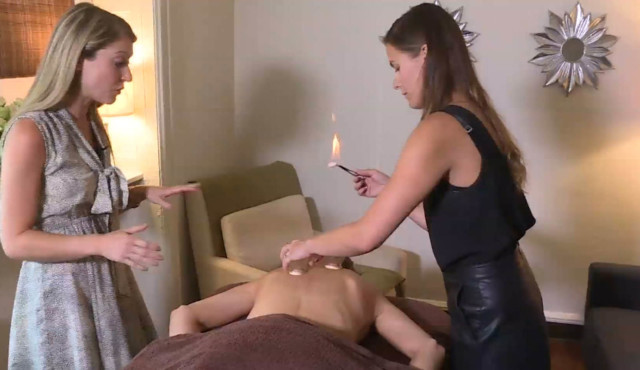An ancient physical therapy technique most used in China called “cupping” is having a moment in the global spotlight thanks to one of its devotees – U.S. Olympic swimmer Michael Phelps. The technique has been gaining in popularity in the West despite mixed opinions on whether it provides any real medicinal benefit.
CCTV America’s Karina Huber tries the therapy herself.

Cupping has been around for a very long time – ancient Greek and Roman texts mentioned it and it’s been in practice in China for at least 2,000 years but here in the U.S., it’s still relatively unknown and few people have experienced it including myself – until now.
The first question Acupuncturist Lea Gance of The YinOva Center in New York City always gets for first time “cuppers” is if it hurts.
“It doesn’t hurt. It actually feels like a massage in reverse. That’s the simplest way to explain it,” Gance said.
Often combined with acupuncture, cupping uses heated glass cups placed on the body to draw blood to the surface of the skin. It’s meant to increase circulation and help with soreness and healing.
See Karina Huber’s first-hand account of cupping:
“So, it’s really great for anyone with any type of pain – whether that’s just you woke up and you’re having some back pain that day or more chronic conditions like arthritis or fibromyalgia,” Gance said.
Celebrities like Jennifer Aniston and Gwyneth Paltrow are fans of the treatment despite the large circular bruises they leave.
Those marks were noticeable on U.S. Olympic swimmer Michael Phelps when he competed in Rio recently – triggering renewed interest in the ancient tradition.
Cupping’s endorsement from a pro-athlete like Phelps will likely give the practice more legitimacy but does the treatment really have any proven medical benefit?
A 2012 review of existing studies on cupping found some benefit for those suffering from shingles, facial paralysis and acne but not sore muscles. The review said the studies weren’t done carefully so their results aren’t reliable.
But other medical professionals insist more studies need to be done before we can make any concrete conclusions.
“I agree some of the qualities of the studies weren’t perfect but it still doesn’t meant that there isn’t something there that some of my patients find very beneficial,” Director of Complementary and Integrative Medicine Program at the Mayo Clinic Brent Bauer said.
“So, I think we have to be careful we don’t do a blanket endorsement – we don’t have enough evidence for that – but I don’t think we should throw out the baby with the bathwater just because the perfect studies haven’t been completed yet.”
The scientific evidence on the benefits of cupping may be minimal but anecdotally people say it makes them feel good and more relaxed – much like a massage. And after undergoing the experience, Huber agreed.
 CGTN America
CGTN America
